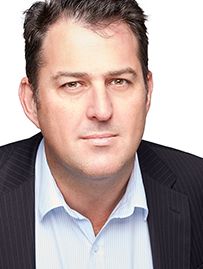
How you can buy Netflix, Facebook, Apple and Amazon without owning the stock
The investment story of the moment is all about the record highs on US sharemarkets, but in reality the market is being driven by only a handful of the major technology stocks.
The S&P 500 is one of the main US market indices and set a series of new records almost every day in the last week of August.
Look closer, however, and you will see that around one quarter of the S&P 500’s value is accounted for by the familiar roll call of Netflix, Facebook, Alphabet (Google’s parent company) and Apple.
Without these four stocks, the S&P wouldn’t be setting any kind of records. In fact, it would be in negative territory.
But what does this mean for the average Australian retail investor, who might balk at paying US$3400 for a single share in Amazon, or even just under US$300 for a Facebook share?
There are proxies for these stocks which can give investors exposure to the kind of sentiment which is driving the technology giants, without having to buy in directly.
Those big technology stocks are all listed on the US NASDAQ exchange, and Betshares offers an Exchange Trade Fund (ETF) which tracks the performance of the NASDAQ-100 index without having to actually hold the shares.
The ETF is listed on the Australian Securities Exchange and one unit can be purchased for around $27 as of this week. On March 13, the same unit would have cost under $20, so that represents a gain of 35 percent in under six months.
Other ETF providers, such as Vanguard and iShares, have similar products which offer exposure to these trillion dollar companies for a comparatively modest outlay, and most of them are showing year to date returns of around 30 percent.
Beyond ETF’s, the recent bull run in the US raises the ongoing question of passive versus active investment approaches.
Until the volatility of earlier this year, passive investment – which tracks the performance of major market indices – was considered the best approach but this was turned on its head when the market slumped due to the pandemic.
Then, some sectors – such as online retail and technology – began to surge due to the disruptions, while others – like commercial property and traditional retail – fell sharply.
In that environment active investment came to the fore, as investors did their research and picked and chose winners as the rest of the market continued to struggle.
The technology shares may be only a small part of the market, but we have seen them take the overall market indices to a series of record highs in recent weeks.
In this context, it might be time to think about passive investing, which once again could mean an ETF – listed on the ASX – which mirrors the performance of a basket of international shares or a particular index, either the NASDAQ or the S&P 500.
It might be wise to consider the words of legendary US investor Warrant Buffett, who wrote that after he passes the trustee of his wife’s inheritance has been told to put 90 percent of the proceeds into an S&P index fund, with balance in short term government bonds.
Given that Buffett has a net worth of close to US$80 billion, this is advice worth considering.




























